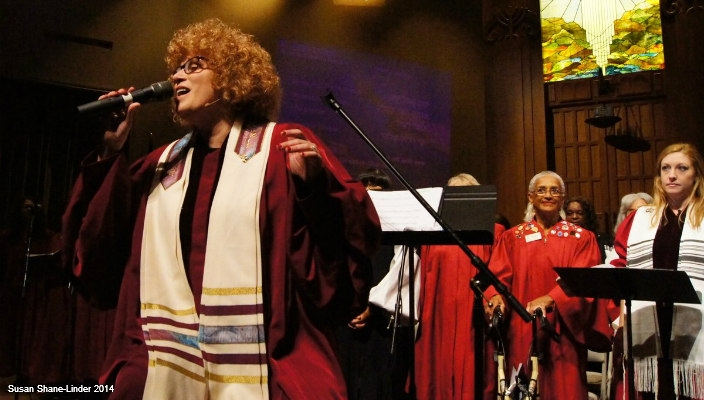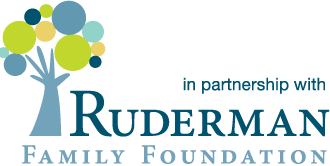How We Can Include Everyone in the Days of Awe
09/14/2016
As a young child with an anxiety disorder, I found the Unetaneh Tokefand surrounding liturgy so disturbing that I had to leave. As a young child in a wheelchair, I waited in an empty shul while everyone ran to the river to do Tashlich. Even though, for me, getting into the synagogue was easy, it was getting some awe that was difficult.
What does it mean to be included in the Days of Awe? Most of our synagogues have a plan. When a wheelchair user approaches the building, they are directed to seats that have been set aside. A worshiper who is hard of hearing is directed to an assistive listening device, and a worshiper who is blind is guided to his seat and given a Braille machzor(High Holidays prayer book). In the synagogues that think of themselves as most inclusive, various members with disabilities – physical, intellectual, and emotional – are given bimah honors.
Laudable plans, all – but we could spend a great deal of time talking about how they fail. Too often, well-intentioned ushers drag a blind person to their seats or push a person with a mobility impairment to sit in the space they’ve created, even if they’d like to and can safely sit somewhere else.
The oft-repeated but never worn out idea that the first answer to inclusion is to meet an individual where they are – and these are in fact all things that we should think about as we begin to prepare for the Days of Awe. And yet, they miss the bigger question.
On the High Holidays, we read, “Untaneh-tokef k’dushat hayom – ki hu nora v’ayom.” Gates of Repentance, an older version of the Reform machzor, translated this phrase to, “Let us proclaim the sacred power of this day, it is awesome and full of dread.”
Sometimes I think the words “nora v’ayom” might refer to the incredible mess and strain of preparing our Jewish institutions to accommodate two and three times the capacity of even the busiest other times of year, a tremendous effort to do the impossible. Trust me, I get it: I’m the son of a pulpit rabbi, and I’m also a former Hillel board member who’s active in multiple shuls and counts among my friends an astonishing number of people currently preparing to manage and lead the High Holidays. I get it, it’s truly a taxing time.
Within this context, it would be easy to say that merely remembering to arrange accomodations is a triumph, and it is. Yet we can’t forget the full sentence: “Untaneh-tokef k’dushat hayom – ki hu nora v’ayom,” “Let us proclaim the sacred power of this day, it is awesome and full of dread.”
We learn that this is a day of sacred power for Jews – when our fates hang in the balance, when we do an accounting of our souls, offer them up in full knowledge, and so be it. At the end of 10 days, we culminate with a daylong mini-death, rigorous confessions of our sins, the hurried knowledge that the gates are closing, and a spiritual transformation when at last we hear the final blast of the shofar.
What, then, does it really mean to include someone in awe?
It’s not just getting into the sanctuary but being able, within reason, to sit where you want. It’s not just attending a service with an assistive listening device but, for a person with a hearing impairment, being able to attend a service that speaks to them, that fills them with power and quivering. It’s allowing those who need to walk around to walk, and those who need to rock around to rock. And, as my opening examples indicate, the barriers to inclusion don’t stop once worshipers enter the room.
As congregational leaders, our task is not to get people nominally in the doors of our sanctuary but to help them through the gates of repentance – even as we amble through ourselves.
Even as you juggle seating plans and sermons, parking cordons and English readings, I challenge you not merely to congratulate yourself for having figured out how to get people into the room. At this holy time of year, think instead about how you can include them in awe.
If there’s time (and at this point, maybe these will become notes for next year), do an exercise like the one I propose in my webinar “Writing Inclusive Liturgy” on the URJ’s Disabilities Inclusion Learning Center. Help people understand the prayers, especially the troubling ones, and the concepts, and find a safe way to internalize. Think about how you’re going to be as flexible as possible with seating, and whether or not you can find listening solutions for multiple rooms.
Your question should not be, “If a person with a disability shows up, how do we include them in our service?” but rather, “How do we include them in awe?”
To learn more about this topic, register now for Matan Koch’s online learning session “Included in Awe: Opening the Gates of Repentance for Everyone,” Tuesday, Sept. 20, 2016 at 2:00pm ET.

